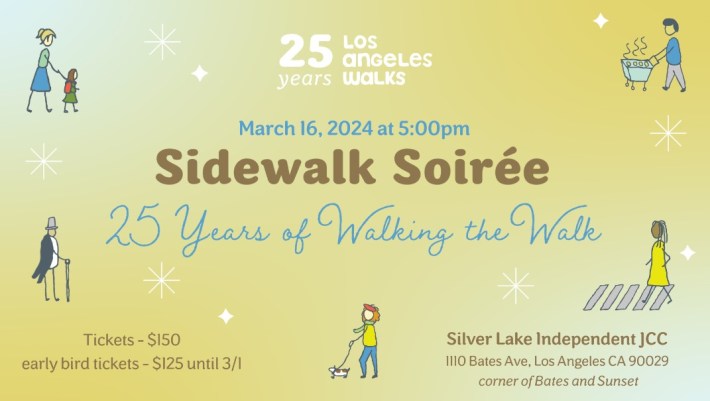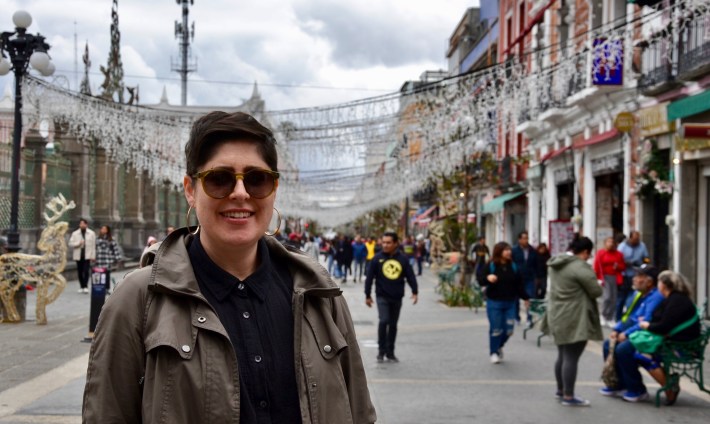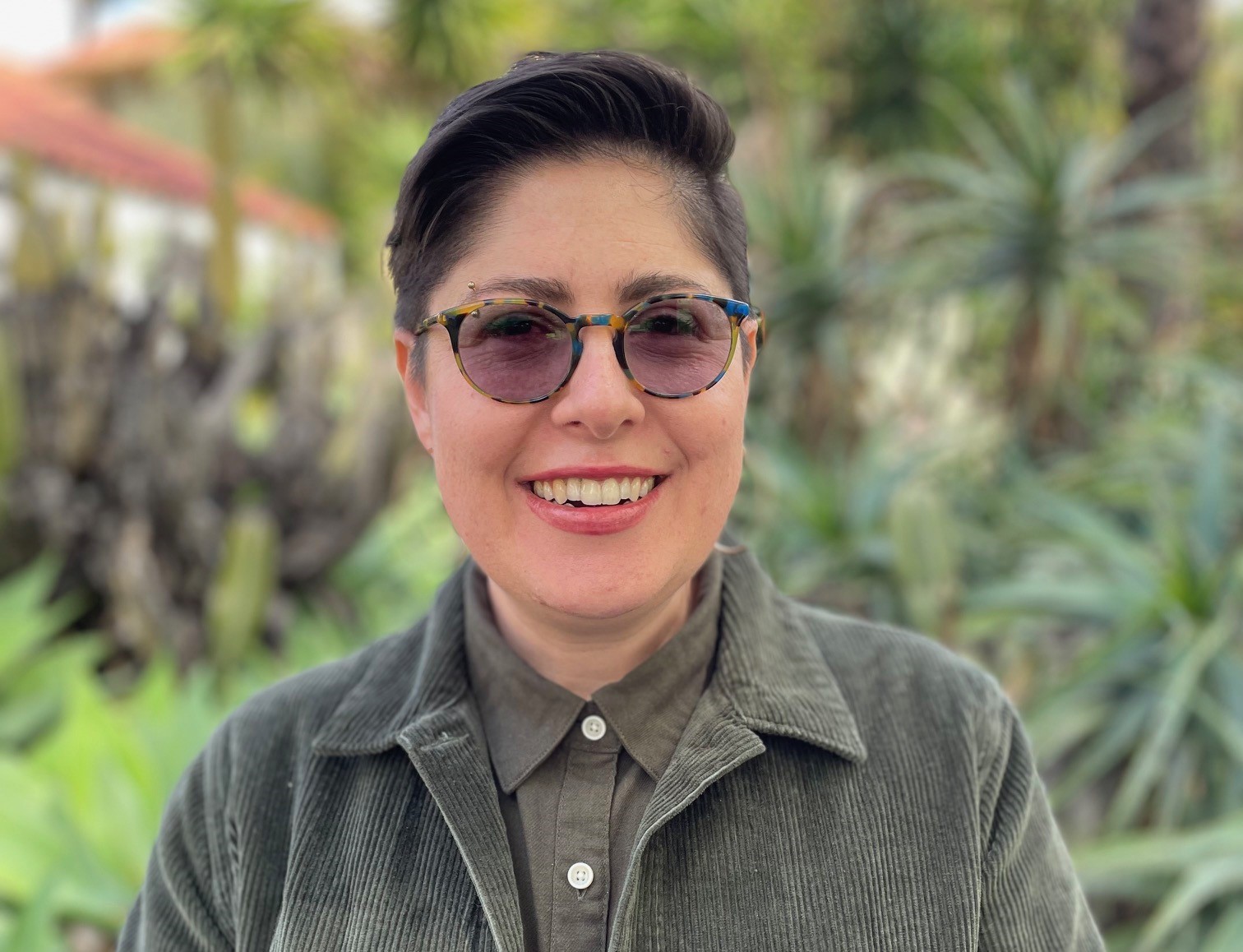Southern California's premier walk advocacy nonprofit Los Angeles Walks has a new Executive Director: Alexandra Ramirez. She started with the organization earlier this month.
Readers who purchase a ticket (act fast) can meet Ramirez at this Saturday's L.A. Walks Sidewalk Soirée event. Celebrate 25 years of pedestrian advocacy, meet Alexandra Ramirez, and hear from an awesome group of heroic honorees including Supervisor Holly Mitchell, two former California Transportation Commissioners: equity fighter tamika butler and clean air advocate Joe Lyou, Willowbrook Inclusion Network (WIN) founder Reggie Johnson, CicLAvia Executive Director Romel Pascual, and L.A. Walks founder Deborah Murphy. Get your soirée ticket now.

(Former L.A. Walks Executive Director John Yi is running for State Assembly, facing a November runoff against Mark Gonzalez.)
This interview was conducted via email this week.
SBLA: Let readers some things about you and your background. Where did you grow up? What education, work, and/or other experiences have shaped you?
I grew up in central Mexico, in Cholula (Cholōllān), a historic city where people have been continuously living and shaping their environment for almost 3,000 years. It was an important commercial route between the Gulf of Mexico and the capital of the Aztec empire in Tenochtitlan. My family was part of that traditional trade as comerciantes (entrepreneurs) who owned and operated a corner store in the local market. We were also shaped by our struggle to build a stable future for our family which led my dad to migrate to the U.S. multiple times before and after I was born.

I think what has shaped me the most is understanding myself as a person who exists in between spaces, in the borderlands as described by author Gloria Anzaldúa. For the last decade, I have worked in the nonprofit sector developing projects that capture some of those transitional experiences, supporting people that are seeking stable housing, food and economic opportunities while centering our relationship to land and culture.
My educational background is in architecture which is how I was first introduced to safe street infrastructure. I was a single mom when I was finishing my undergraduate degree and met an urban biking group that was organizing to reinstate a bike lane on our main street. For two years, we campaigned for some of the first Slow Streets projects in the country, working within the national bike network (BICIRED) and with transportation experts from the Institute for Transportation and Development Policy (ITDP). I learned a lot about how people experience infrastructure improvements from the intersections of class, accessibility, and indigenous land rights, which inspired me to pursue a masters degree in urban and regional planning.
How do you typically get around?
Whenever possible, I walk but I use a mix of ways to get around (drive, bike, public transit, carpool, rideshare). I live with a chronic visual impairment so reducing the amount of driving I have to do is really important to me. I also have two kids, a 15 year-old and a 15 month-old (who is walking already!), so our ways of getting around include scooters and strollers too.
What are your top priorities for Los Angeles Walks in the years ahead?
We really want to see the number of pedestrian deaths go from one almost every day of the year down to zero. We know it’s possible and there are design solutions and policies that will help us get there, making our streets not only safer but more enjoyable. Our focus is on infrastructure improvement by strengthening and expanding our network of community advocates, specifically in places that have been historically disinvested due to racist policies and planning, so they are the ones leading the change they want and need to make their streets safer.
Pretty much everyone walks, but it also feels somewhat invisible. Few people identify themselves as pedestrians, few as advocates for walking. Sometimes walking can also be seen as low status - a mode for people not successful enough to have a car. How can you and Los Angeles Walks change the perception and status of walking?
Most of the stories we hear about walking experiences are centered around people's sense of safety. I think if most of us stopped to consider what kind of society we aspire to be, we would agree that we want people to feel safe walking regardless of their age, gender, race, mobility, and ethnicity. And yet, although most of us walk, walking safely is not an experience that is easily accessible to everyone.
At Los Angeles Walks, a lot of our work focuses on centering the experiences of the most vulnerable people on our streets and uplifting those narratives in our advocacy and educational spaces. Through our PedPower workshops, community members learn about the design alternatives they can advocate for so that investment in their communities align with their values for safe and walkable places.
Low-income communities of color bear a disproportionate brunt of L.A.'s unsafe streets. How do you plan to incorporate equity into the work of L.A. Walks?
We want to make sure that the decisions we make are being guided by the people most affected by traffic violence. That means building a strong network of advocates with a diverse range of experiences when it comes to walking or navigating our streets. We cannot do the work of building equitable transportation systems in L.A. alone. That is why we join other organizations and coalition spaces like Our Streets Action Committee, to begin to shift policy and guide the allocation of funding to neighborhoods that have been historically disinvested.
In recent years, there have been several heart-wrenching news stories about drivers killing kids walking to school. What's your take on how to make it safe for kids to walk to school safely?
We need streets that are better designed, that capture our attention, that naturally slow us down, that keep people that are walking - which at some point that can be any one of us - safe. We work with the victims of traffic violence and their loved ones through the SoCal Families for Safe Streets, which is a chapter of the National Families for Safe Street organization. Our members create support networks to help each other through unspeakable pain, they increase awareness of safe street practices, and build a strong movement to make our streets safer for all. Through this network, we focus on systems change, supporting legislation and infrastructure changes that could prevent more tragedies from happening. There is a lot of investment available now to fund these improvements so we want to see implementation that is equitably distributed in L.A., that is focused on improving conditions for the people and places that need it most.
A lot of walkability improvement - especially sidewalk work - goes hand in hand with accessibility for folks with disabilities. How do you see L.A. Walks working together with accessibility advocates?
I think about this a lot as a person who is likely to lose my eyesight before I reach retirement age, and as I have seen my grandfather age and lose his mobility, sight and hearing.
There’s so much work to be done when it comes to accessibility and it’s truly remarkable that ADA compliance wasn’t enacted until 30 years ago. Our role is to continue to build strong alliances so that when there are infrastructure changes, those include the experiences of the people most vulnerable on our streets.
Walking has been in the news a bit lately with Measure HLA, which will likely help some pedestrian projects, but unfortunately HLA probably won't do all that much for walking - compared to bus and bike. Any thoughts on how pedestrian advocacy changes in the light of voters resoundingly approving Measure HLA?
Our hope is that Measure HLA will translate into infrastructure improvements in communities that need it the most. It does require a lot of accountability and ensuring community members have a seat at the table.
It is also impossible to extricate the walking experience from biking and public transit since most of us use a mix of all mobility options, and I’m encouraged by the amazing people in the transportation advocacy space who understand the alignment of our struggles and advocate for all accessibility, including pedestrians.
This is a question Streetsblog L.A. typically ends interviews with. If you had a magic wand and, overnight, could change any aspect of Southern California mobility or livability, what would you change?
I would designate commercial corridors as walking only areas. We do this already with outdoor malls except people drive and park there to experience a walkable street. I would love to see a more organic taking over of streets for recreational and commercial activities. CicLAvia is a great example of street takeovers and how enjoyable it is to be in a street that is full of people and not cars.
Anything else you’d like to tell Streetsblog L.A. readers?
It’s a great time to get involved with Los Angeles Walks! We’re going to be hosting multiple events this spring and summer so sign up to volunteer, email us at hello@losangeleswalks.org.







